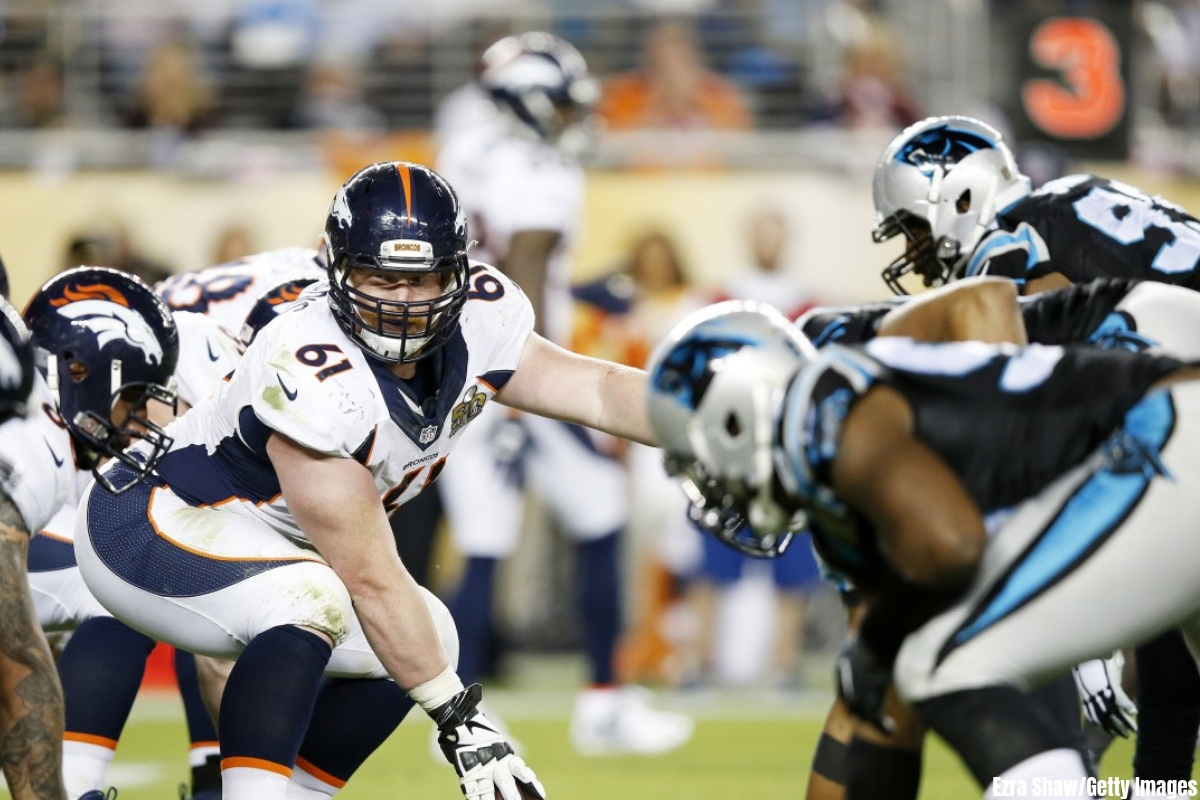Run Blocking
The plays that tend to stand out for run blockers are the ones where they are able to drive the defender backward or sideways off the screen, so lets get these out the way:
So yes, Paradis has the power to be a factor in the run game, but most offensive linemen have this power, what is important is how effectively and consistently they are able to use it. A key part of this is pad level; if a player doesn’t get low enough, rather than driving through the defender, they end up wasting a lot of their generated force, and if the defender is able to force them upward, almost all of the generated power is useless. Generally, Paradis’ pad level was pretty good, but there were times where he got caught out, usually stemming from him overstraightening his legs:
The flip side of this is that sometimes, in an attempt to keep their pad level low, players can lean forward. This is fine at times, but also leads to a loss of control and can lead to vulnerabilities if the player isn’t able to fully locate their block initially:
This was something of an issue for Paradis, and while this probably wasn’t helped by the amount Denver asked him to down block against larger defensive linemen, he would do better to bend more with his knees and lean less – while this would decrease the amount of push he is able to generate, it would greatly reduce the risk of him completely whiffing on blocks.
Of course, while this ability to generate push and to control it is important, a lot of what the Panthers do in the run game is zone based with the emphasis being on gap control rather than push, something that in turn places a significant emphasis on hand usage and placement, with blockers being asked to guide defenders rather than drive them backwards. As with his pass coverage, Paradis shows the ability to locate his hands well inside defenders on a consistent basis:
However, the wide arms that showed up in his pass coverage also show up as a run defender, and here the problem is more persistent. On the following play, he isn’t able to get his right arm inside and when the defender looks to shed inside, he isn’t able to hold on and gets left behind:
And here he once again loses to inside hand position battle due to his wide arms off the snap and ends up fighting to get back in the play as a result:
And rather than allowing him to control his blocker on the following play, he is forced to try and simply stay in front of his defender to allow the ball carrier to make his cut:
This shows up in an even more exaggerated fashion when he was asked to block in space, as the combinations of his tendency to lean forward and allow his arms to get too wide means that he does whiff more often than you’d like:
Though, his movement skills are highly impressive as always:
And when he is able to get his hands in place, he is extremely effective:
Paradis certainly has talent as a run blocker on the line, and in space his movement skills and hand placement are extremely valuable; as of right now, he is a decent run blocker, not a great one. If he can work on keeping his elbows inside his frame and restrain his tendency to overlean into blocks, the ability is there to continue to improve – he has only played five seasons in the NFL and while he is very good, he still has a potential to go up a level.
The Panthers likely were able to get Paradis for the price they did due to the injury he sustained last season, but with the expectation that he will be fully healed to start training camp, it is hard not to think the Panthers got something of a bargain, especially given the highly team-friendly structure of the contract, with only a $4m cap hit in 2019. There is room for Paradis to improve, but as things stand, the Panthers now have a good starting center going in to 2019, something that was far from a certainty a week ago.



